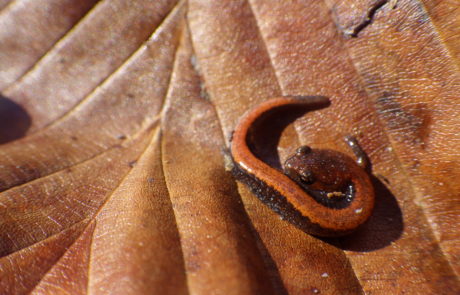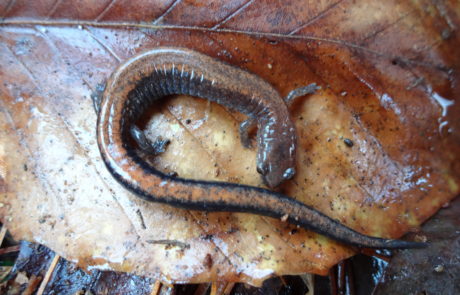Terrestrial Salamanders
In the Fall of 2006, Tremont started its Terrestrial Salamander Monitoring Program. Terrestrial salamanders are relatively long-lived and are sensitive to changes in their environment, making them ideal indicator species. Monitoring terrestrial salamanders long-term in the Smokies is a research priority for the national park so we can better understand our local amphibian populations. In order to monitor these salamanders in a standardized fashion, we set up grids of cover boards in the forest and check underneath each cover board for salamanders when we visit the plots.
Objectives:
We established our terrestrial salamander monitoring program for four reasons:
- To determine which type of cover board is more effective in attracting salamanders
- To assess long-term trends in salamander abundance and diversity in hemlock-dominated forests
- To compare salamander abundance and diversity in hemlock vs. hardwood forests
- To teach salamander ecology and the scientific method to students and local volunteers
Current Study
In our current monitoring project, we are using two types of cover boards (hemlock tree cookies and stone tiles) to sample for terrestrial salamanders. A tree cookie is a 1.5-2 inch slice of a log that is tagged and placed on the ground to act as a cover object for salamanders. Previous iterations of this study compared a) tree cookies with plywood squares and b) two species of tree cookie. For this study, we decided to use hemlock tree cookies because there is currently an abundance of downed hemlock due to the great mortality caused by the Hemlock Wooly Adelgid.
We have four sites at Tremont, with each site containing 40 cover boards. We are comparing salamander abundance and diversity between the two types of cover objects, as well as between two different forest types (hardwood forest versus forest dominated by the Eastern Hemlock). We measure surface temperature and estimate soil moisture under the cover boards to determine the favored microhabitat requirements of salamanders.
Questions:
- In our deciduous forest plots where there is less downed hemlock available for cover, will salamanders be found under hemlock cover boards proportionally more than at the hemlock-dominated sites?
- Will we find more salamanders under tree cookies or stone slabs?
- Will the abundance and diversity of salamanders differ between sites or times of year?
- How do the microhabitat variables relate to salamander abundance and diversity?
Resources:
Monitoring Procedures
Monitoring Data Sheet
Terrestrial Salamander Identification Key
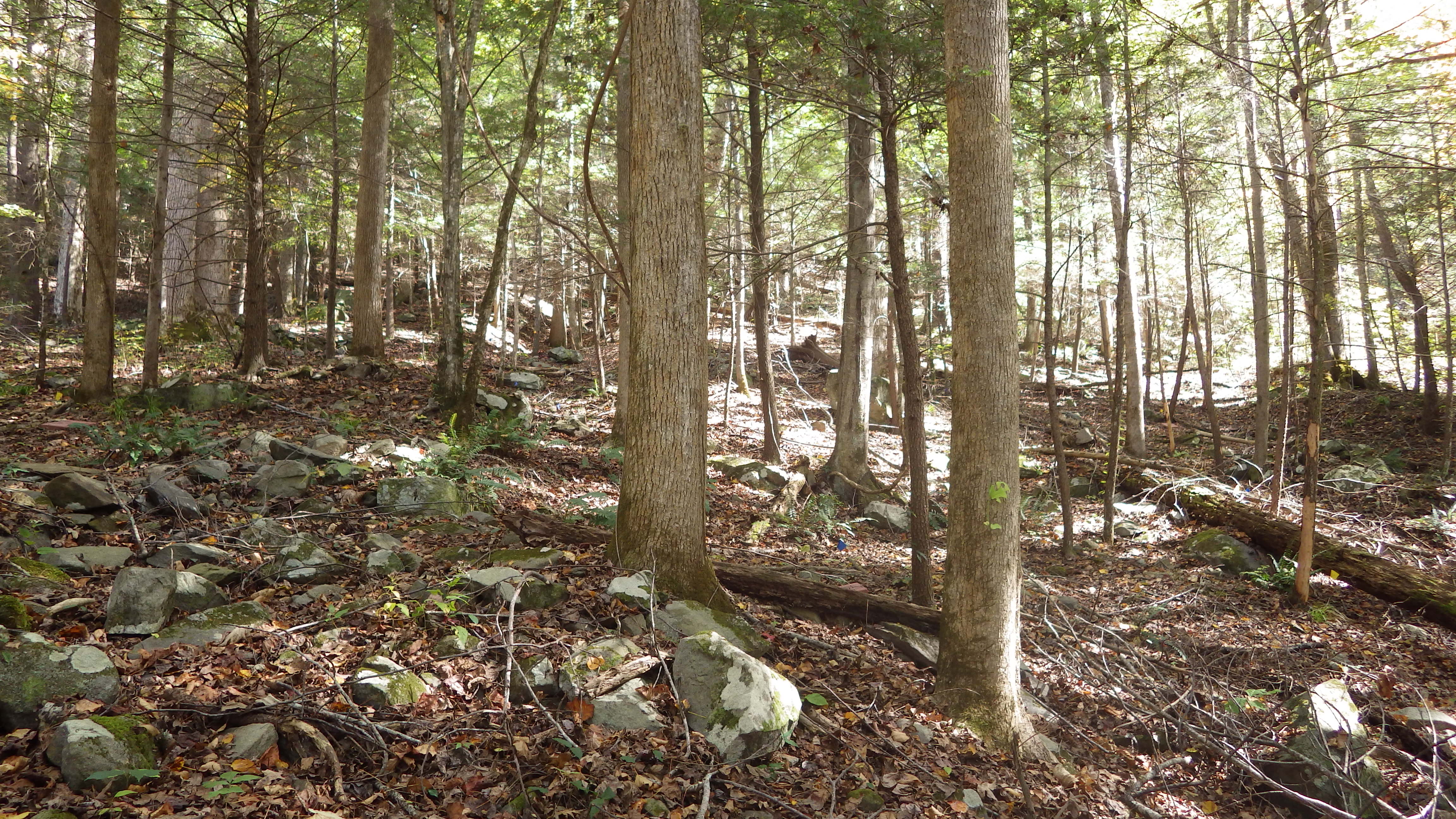
Study Area
We have four sites at Tremont, with each site containing 40 cover boards. We are comparing salamander abundance and diversity between the two types of cover objects, as well as between two different forest types (hardwood forest versus forest dominated by the Eastern Hemlock).
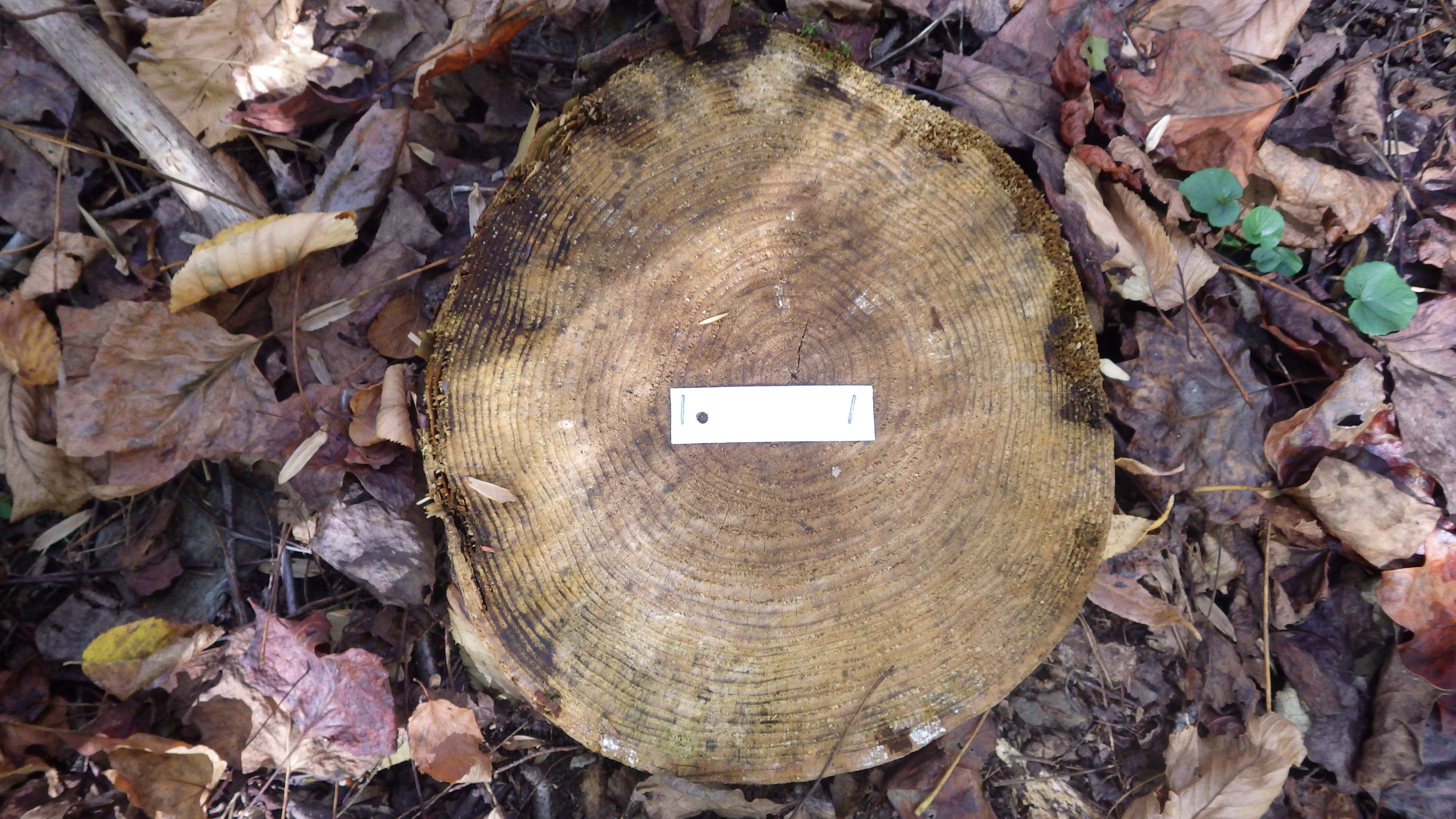
Tree Cookies
A tree cookie is a 1.5-2 inch slice of a log that is tagged and placed on the ground to act as a cover object for salamanders.
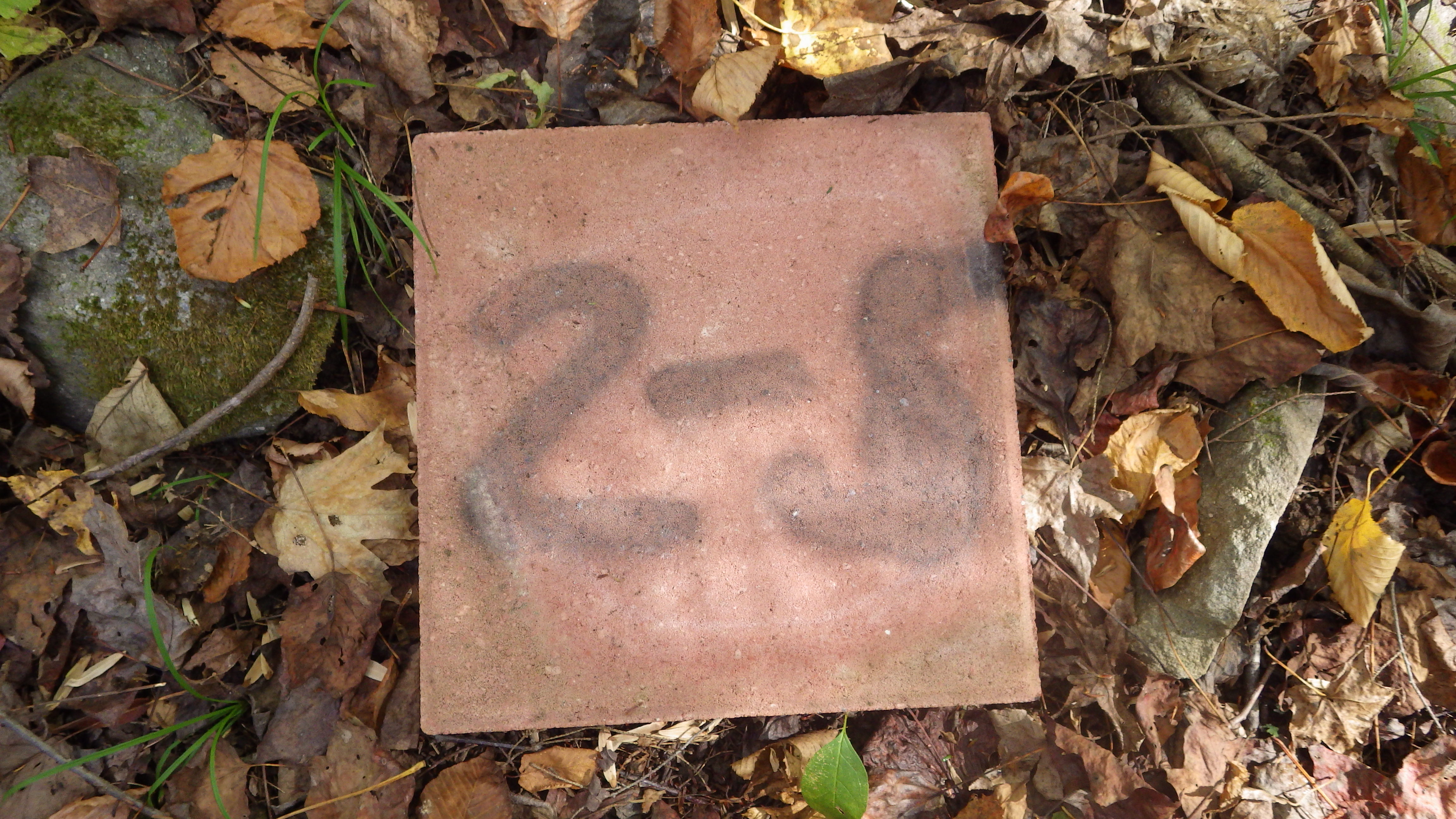
Stone Tiles
What salamanders might we find under our stone tiles? Thanks to Lowe’s of Alcoa, TN, for generously donating our stone tiles for this project!
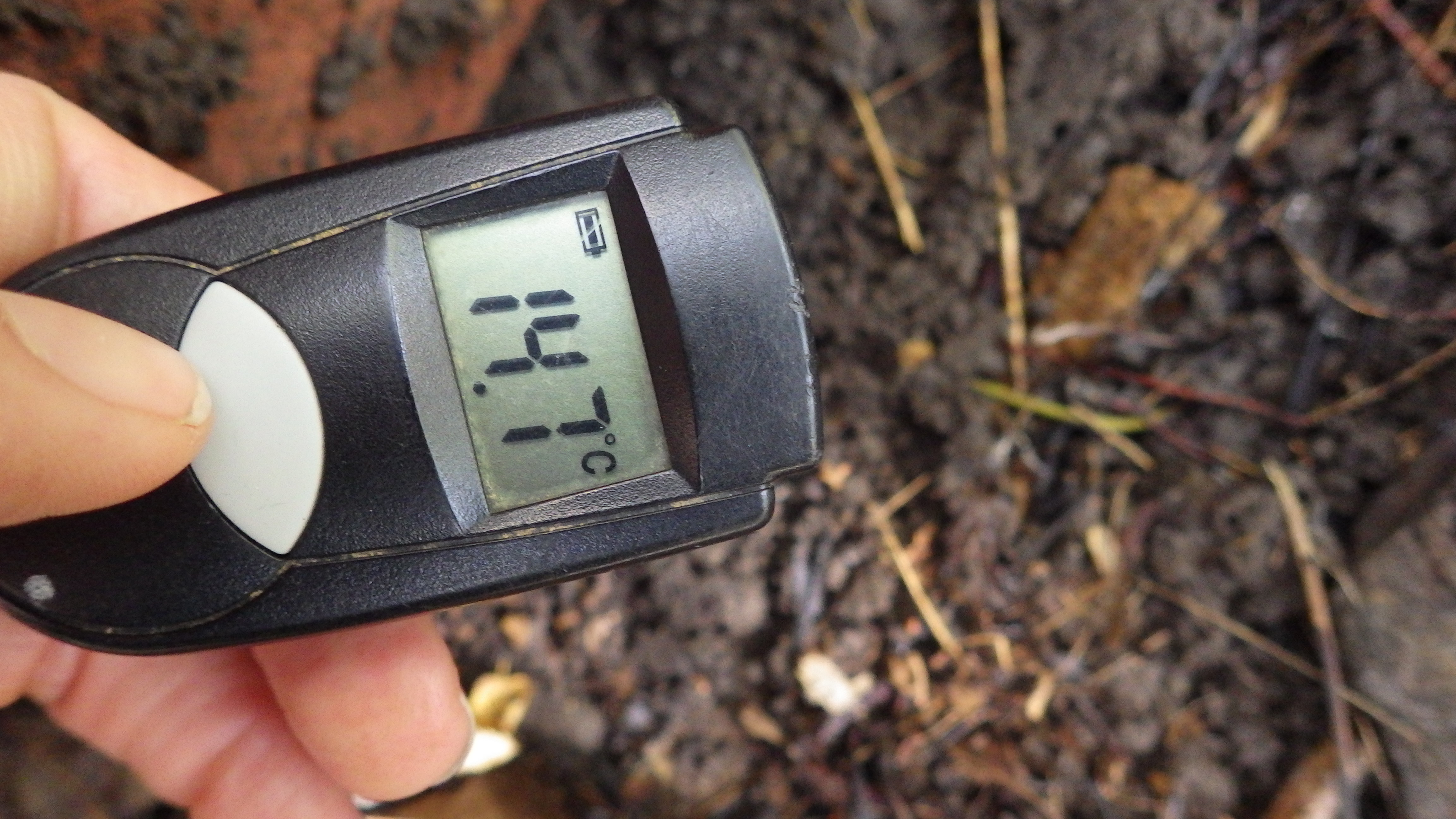
Microhabitat Variables
To determine the proximate factors that might be responsible for changes in salamander abundance/diversity, we use a Pocket Infrared Thermometer (Ben Meadows) to ascertain surface temperature under each board. In addition, we assess surface moisture under the board using a coarse qualitative scale (1 – dry, 2 – moderately moist, 3 – wet, leaves glistening, soil sticky).
We tilt each board on its side, take temperature measurements in the center of where the board sat, assess soil moisture, catch and measure any salamanders, and also note any other invertebrates of interest.


